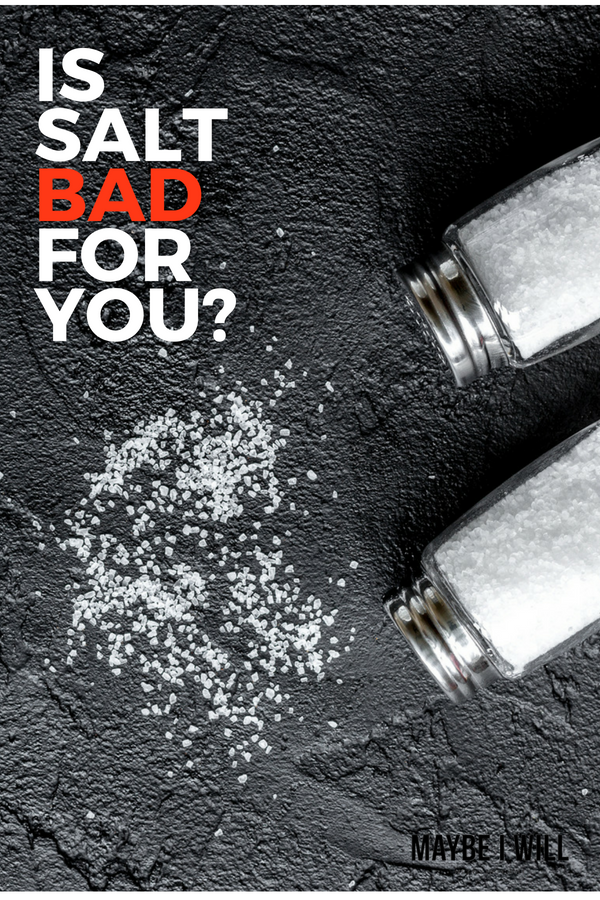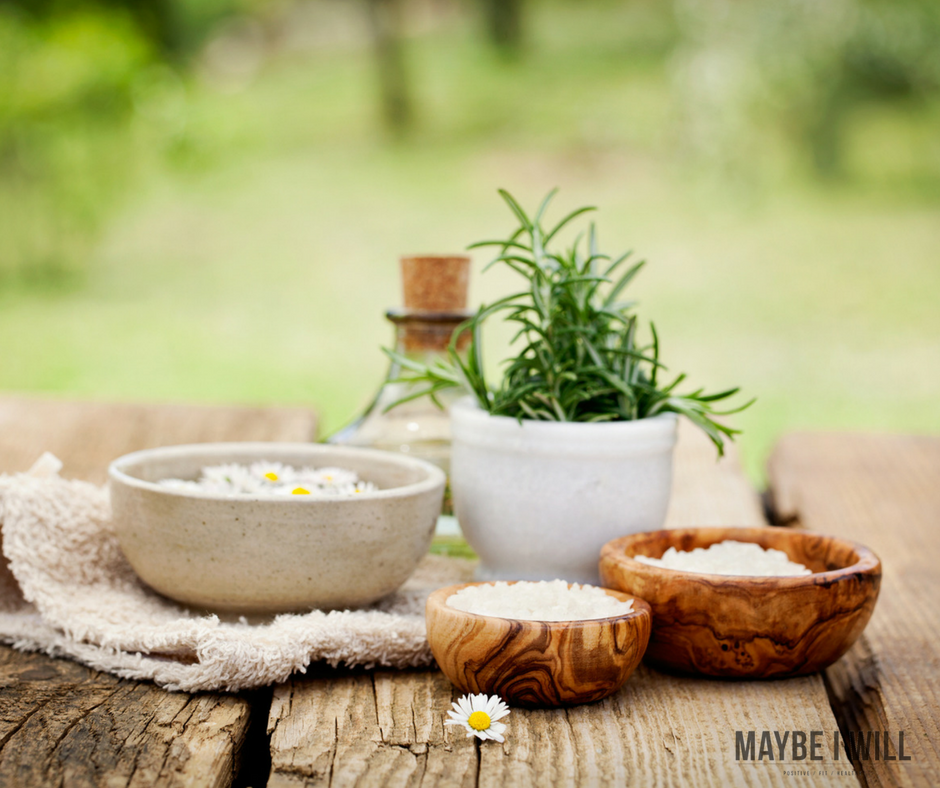Is Salt Bad For You?
In the past salt has been given a bad rap, but with the uprising of natural salts and articles of their benefits you may be wondering is salt bad for you?
Salt is the world’s oldest additive and preservative. It has literally and quite profoundly influenced the political and economic history of the world. It was at one time traded ounce per ounce for gold because of the hard work necessary to extract it and the high cost and dangers of exporting it. Salt was literally “worth its weight in gold”. It was even sometimes given to Roman soldiers as payment which led to the word “salary”.
Salt was such an important commodity through much of history that it influenced the establishment of trade routes (via Salari in Italy) and built up great cities (Salzburg, Austria). It started and financed wars and revolutions secured some empires and toppled others. Why has salt always held so much power? If you’ve ever tasted plain popcorn or unsalted potato chips you might think you know the answer–salt makes pretty much everything taste better. But the real reason is a bit more pragmatic. Up until the advent of modern canning and the invention of refrigeration, salt was the main method for preserving meat, fish, and vegetables. Access to salt could literally be the difference between life and death.
All through history, salt and it’s availability have been pivotal to civilization and yet it’s probably something you never think about unless you can’t find where someone put the salt shaker. But it is something you should think about because not only is it an essential element of good cooking, it’s an essential element of good health.

Is Salt Bad For You?
Well, that depends. For years we’ve been warned about the dangers of salt and how a high salt diet is the cause a myriad of problems such as bloating, edema, high blood pressure, heart disease and stroke. Unfortunately, most of the studies done on sodium have used standard table salt in the research. And the negative research on salt very likely has something to do with that fact.
In order to get that perfectly white salt, we’re all used to, standard table salt is heavily processed and refined just like all-purpose flour and granulated sugar. It starts off by being cleaned with chemicals (stripping away any naturally occurring minerals) and heated to over 1200 degrees Fahrenheit to kill any microorganisms. Sometimes it is even bleached. Most companies then add back iodine (labeled as iodized salt) as well as anti-caking agents. Many companies go even further and add baking soda, aluminum compounds, and even sugar. Say what??!!
It’s so important to read food labels, even on something as seemingly innocent as salt. Make the switch to natural salt and use the table salt in your house for homemade cleaning or homemade beauty products.
What Is Natural Salt
Salt is an essential part of human nutrition and is needed by many bodily systems to function properly. Regular table salt is approximately 98% sodium chloride due to the fact that the processing it goes through has removed all other minerals. Natural sea salt is approximately 84% sodium chloride with the remaining 16% being these naturally occurring minerals that are essential for your body.
Here’s why you need a steady, albeit reasonable, supply of natural sea salt:
- Blood Pressure–some evidence shows that it may actually help regulate blood pressure by helping with the lining of blood vessels.
- Heart Health–the negative ions in natural salt support electrochemical reactions in the body and can stabilize an irregular heartbeat.
- Blood Sugar–proper mineral balance from natural salts can help increase insulin sensitivity and control blood-sugar spikes.
- pH Balance–because salt is alkalizing it may help in regulating the body’s pH levels.
- Muscle Pain–the trace minerals (especially magnesium) and high pH in natural salt help alleviate muscle cramps. That’s why a saltwater/Epsom salt bath feels so good after a hard workout.
- Cell Cleansing–it carries nutrients into your cells and toxins out.
- Bone Health–a whopping 25% of the body’s salt is in the bones. When sodium and minerals are depleted, the body pulls it from the bones which leads to osteoporosis.
- Muscle Movement–it helps your brain send signals to your muscles so you can move on demand (sodium-potassium ion exchange).
- Bodily Fluids–it is a major component of your blood plasma, lymphatic fluid, extracellular fluid, and even amniotic fluid. And let’s not forget saliva, tears, and boogers. LOL!
- Digestive Health–when taken with water it can increase stomach acid which can decrease digestive disorders, heartburn, and other digestive problems.
5 Salts To Try Now

Sea salt sounds very gourmet but technically all salt is sea salt meaning it originally came from salt water. In modern times it’s categorized as either sea salt (which is harvested from evaporated sea water) or rock salt (that is harvested from the earth where a sea used to be millions of years ago). Here are five natural salts that have become readily available and that should be in your cupboard, not only for their unique flavors but also because they are much healthier for your body than the table salt you’re probably using now:
Fleur de Sel
Literally translated as “flower of salt”, fleur de sel is a sea salt hand-harvested from tidal pools off the coast of Brittany, France. These paper-thin salt crystals are delicately raked by hand from the water’s surface and can only be done on sunny, dry days. Because of its labor-intensive harvesting, fleur de sel is the most expensive salt and is also referred to as the caviar of salts. It retains moisture and has a slight blue-grey tint due to its high mineral content.
Fleur de Sel is mostly used as a finishing salt which means it is used after cooking. Its unique sweet and creamy flavor is used to finish meat, seafood, and vegetables. It is especially popular for finishing desserts and candy made of chocolate or caramel.
Celtic Sea Salt
Also known as sel gris or grey salt, Celtic sea salt is collected from seawater estuaries off the coast of France. The salt crystals are carefully raked out after being allowed to sink to the bottom. The mineral-rich seawater it’s extracted from gives Celtic salt its moist, chunky grains, grey hue and slightly briny taste.
It’s rustic, old-world flavor is more assertive than other salts and is great on fish and meat as both a cooking and finishing salt.
Himalayan Pink Salt
This magically colored salt is hand-mined from ancient salt deposits in the foothills of the Himalayan mountains. This rare and extraordinary salt is considered the purest salt in the world and contains 84 natural minerals and elements, more than any other type of salt. It has a bolder flavor than other salts and can be used in cooking or as a finishing salt.
Because Himalayan salt retains temperature for hours, large pieces are hollowed out and sold as salt lamps which are said to reduce air pollution, negative ions and electrosmog caused by electronic devices.
Redmond Real Salt
This salt is harvested from the vast salt deposits left over from the prehistoric Lake Bonneville that once covered all of Utah. The Great Salt Lake, which gave Utah’s capital city its name, is one of the few remnants of Lake Bonneville, which was once as big as Lake Michigan and significantly deeper. Redmond salt’s unique pinkish appearance and flecks of color come from more than 60 naturally occurring trace minerals.
The delicate, balanced, “sweet-salt” flavor of Redmond salt makes it a great all-around replacement for table salt. Redmond salt is also one of the more economical natural salts available.
Smoked Salt
This is one that not a lot of people are familiar with but once you try it, you’ll want to put it in everything. Because it’s smoked over a wood fire for up to two weeks, smoked salt adds an intense and wonderfully smoky flavor to any dish it’s added to. Depending on the amount of time smoked and the wood used (hickory, mesquite, apple, oak or alder wood are most common), tastes will vary from brand to brand.
Smoked salt is one of the best types of salt to use for flavoring meats for grilling or for when you can’t grill and still want that smoky just-off-the-grill flavor. It’s also great for vegetables, soups, sauces or any food that benefits from a smokey and umami kick. Because of its strong flavor, a little-smoked salt goes a long way.
NOTE: You might be concerned that ditching iodized table salt will mean not getting enough iodine in your diet. Iodine is an essential nutrient and not getting enough can lead to health problems. Most sea salts do contain traces of iodine but it’s a good idea to also increase your consumption of foods high in this mineral. A variety of foods are rich in dietary iodine especially dairy products, seafood, and seaweed. Pineapple, potatoes, artichokes, asparagus and dark green vegetables are also good sources of iodine.
So what are you waiting for? Get yourself any of these delicious and nutritious natural sea salts or better yet, try them all. You’ll be amazed at how much better they taste than table salt and how this simple change can have a big impact on your health.

Follow Leah on Instagram @fabulousfarmgirl

